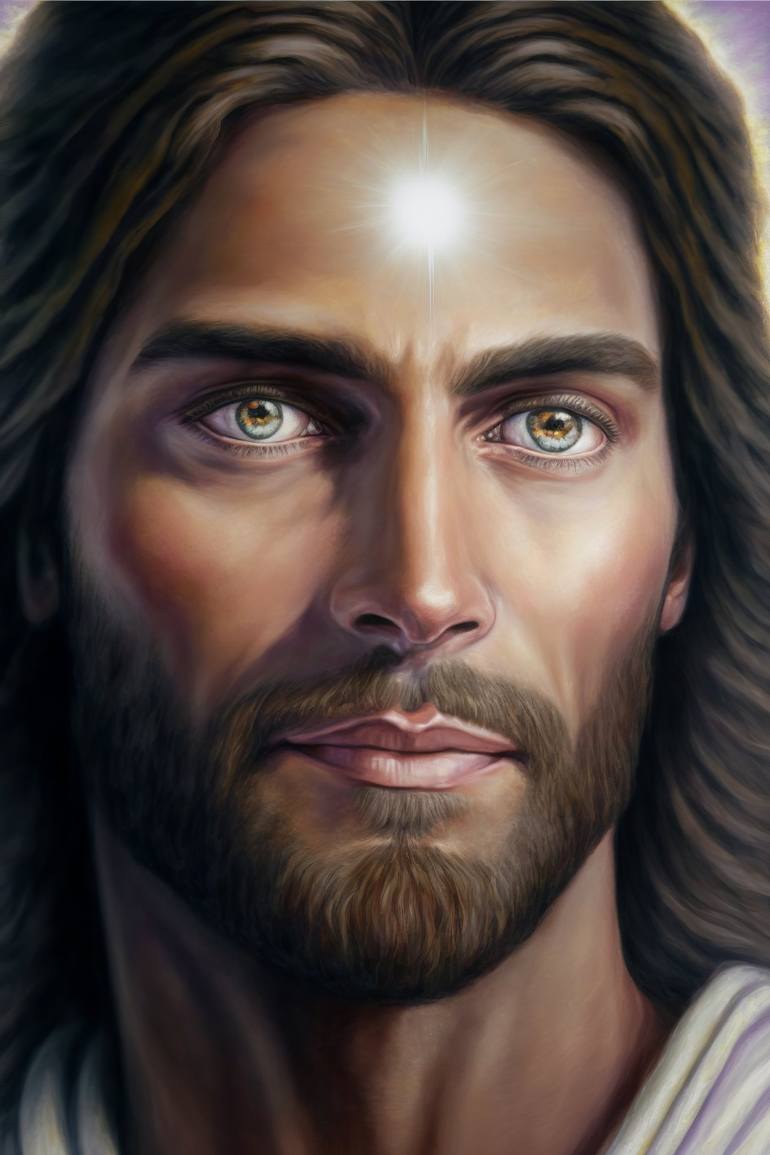Have you ever stopped to imagine the face of Jesus Christ? The image of a man who walked among us, taught us about love and compassion, and ultimately sacrificed himself for our sins is a powerful one. In our minds, we often picture him with long, dark hair, a gentle beard, and a radiating glow – but what about his eyes? What color were they? This seemingly simple question has sparked debate and fascination for centuries, prompting religious scholars, historians, and even artists to ponder its significance.

Image: eagle.5ch.net
Perhaps surprisingly, there is no definitive answer. But, like the many aspects of history shrouded in mystery, it’s a question that captivates our imaginations, urging us to delve into the world of biblical interpretations, artistic representations, and cultural beliefs. In this exploration, we’ll unravel the layers of this intriguing question, venturing into the realms of faith, art, and history to glean insights into the elusive hue of Jesus’ eyes.
The Biblical Silence on Jesus’ Appearance
One of the primary reasons why the color of Jesus’ eyes is shrouded in mystery is the absence of any explicit mention in the Bible. The scriptures, while detailing his life, teachings, and miracles, remain remarkably silent on his physical appearance. There are no verses describing his hair color, eye color, height, or even skin tone. This intentional lack of detail underscores a crucial message: Jesus’ identity and significance transcends physical attributes. His teachings, his love, and his sacrifice are what truly matter.
The Influence of Artistic Interpretations
Throughout history, artists have sought to capture Jesus’ essence through their depictions. While some artists have depicted him with piercing blue eyes, others have portrayed him with warm, brown eyes. These variations often reflect the cultural and stylistic influences of the time and place. During the early centuries of Christianity, in regions like Byzantine and Eastern Europe, artists often depicted Jesus with dark hair and brown eyes, reflecting the prevailing physical features of the region.
However, during the Renaissance, European artists began to portray Jesus with more idealized features, including lighter eyes. This shift was influenced by the classical art forms of antiquity and by the artist’s desire to create a more “divine” and “spiritual” representation. It’s important to note that these artistic interpretations, while beautiful and deeply meaningful, are not grounded in any biblical descriptions. They are artistic expressions of belief and imagination.
The Role of Cultural Interpretations
Across cultures and religions, the color of the eyes holds different symbolic meanings. In some cultures, brown eyes are associated with wisdom and strength, while blue eyes may be linked to purity and spirituality. While these interpretations offer potential avenues for understanding how Jesus’ eye color might have been perceived, it’s crucial to acknowledge that these are cultural lenses, not biblical mandates.

Image: joell.8k.com
The Significance of Jesus’ Inner Beauty
Ultimately, the color of Jesus’ eyes, according to scripture, is irrelevant. It is his inner character, his heart filled with love and compassion, that defines him. The Bible emphasizes his actions, his teachings, and his sacrifice, which transcend any superficial physical attributes. The true essence of Jesus lies in his words, his deeds, and his unyielding love for humanity, which are far more important than the color of his eyes.
What Color Were Jesus Christ’S Eyes
Beyond the Mystery: A Call to Reflect
While we may never know with certainty the color of Jesus’ eyes, the question itself serves as a compelling reminder of the power of imagination and creative interpretation. It encourages us to delve deeper into the scriptures, to engage with art and history, and to appreciate the diverse ways in which people connect with their faith. More importantly, it reminds us that the true essence of Jesus, his message of love and grace, transcends physical features, and resides in our hearts.





